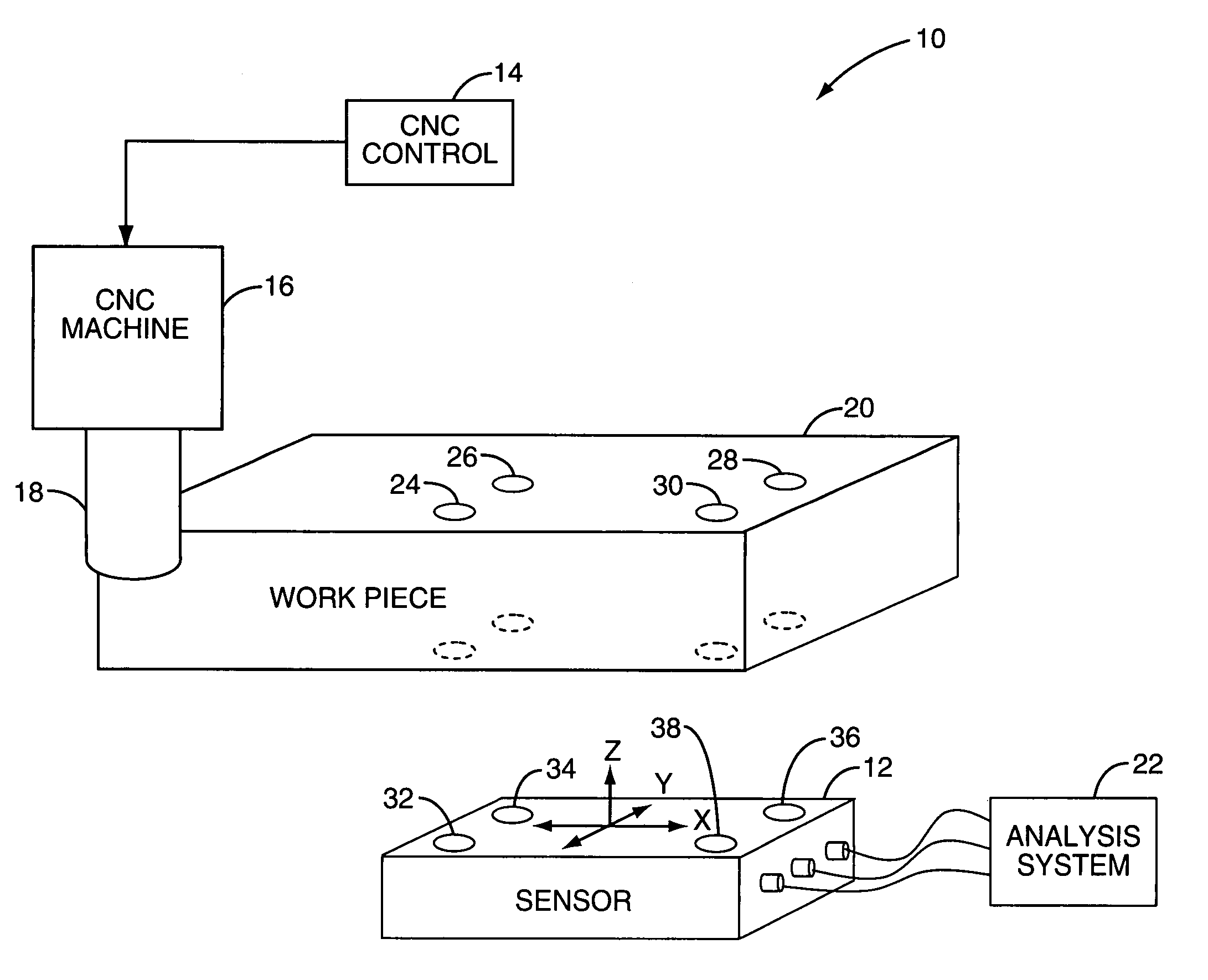Real-time measurement of tool forces and machining process model parameters
a technology of process model and tool force, applied in the field of real-time measurement of tool force and machining process model parameters, can solve the problems of prone to substantial errors, use of a dedicated device such as a piezoelectric, and inability to eliminate the need for tool force measuremen
- Summary
- Abstract
- Description
- Claims
- Application Information
AI Technical Summary
Benefits of technology
Problems solved by technology
Method used
Image
Examples
Embodiment Construction
[0018]The embodiments set forth below represent the necessary information to enable those skilled in the art to practice the invention and illustrate the best mode of practicing the invention. Upon reading the following description in light of the accompanying drawing figures, those skilled in the art will understand the concepts of the invention and will recognize applications of these concepts not particularly addressed herein. It should be understood that these concepts and applications fall within the scope of the disclosure and the accompanying claims.
[0019]The present invention provides a system for measuring tool forces and process model parameters in real-time without the use of force sensors that directly sense tool forces. The force sensors are expensive and, due to their compliance, make the Computer Numerical Control (CNC) machine less stiff and degrade its performance. Indirect sensors, such as power sensors, are inexpensive and non-invasive. However, the difficulty is ...
PUM
| Property | Measurement | Unit |
|---|---|---|
| tool forces | aaaaa | aaaaa |
| forces | aaaaa | aaaaa |
| motor power | aaaaa | aaaaa |
Abstract
Description
Claims
Application Information
 Login to View More
Login to View More - R&D
- Intellectual Property
- Life Sciences
- Materials
- Tech Scout
- Unparalleled Data Quality
- Higher Quality Content
- 60% Fewer Hallucinations
Browse by: Latest US Patents, China's latest patents, Technical Efficacy Thesaurus, Application Domain, Technology Topic, Popular Technical Reports.
© 2025 PatSnap. All rights reserved.Legal|Privacy policy|Modern Slavery Act Transparency Statement|Sitemap|About US| Contact US: help@patsnap.com



